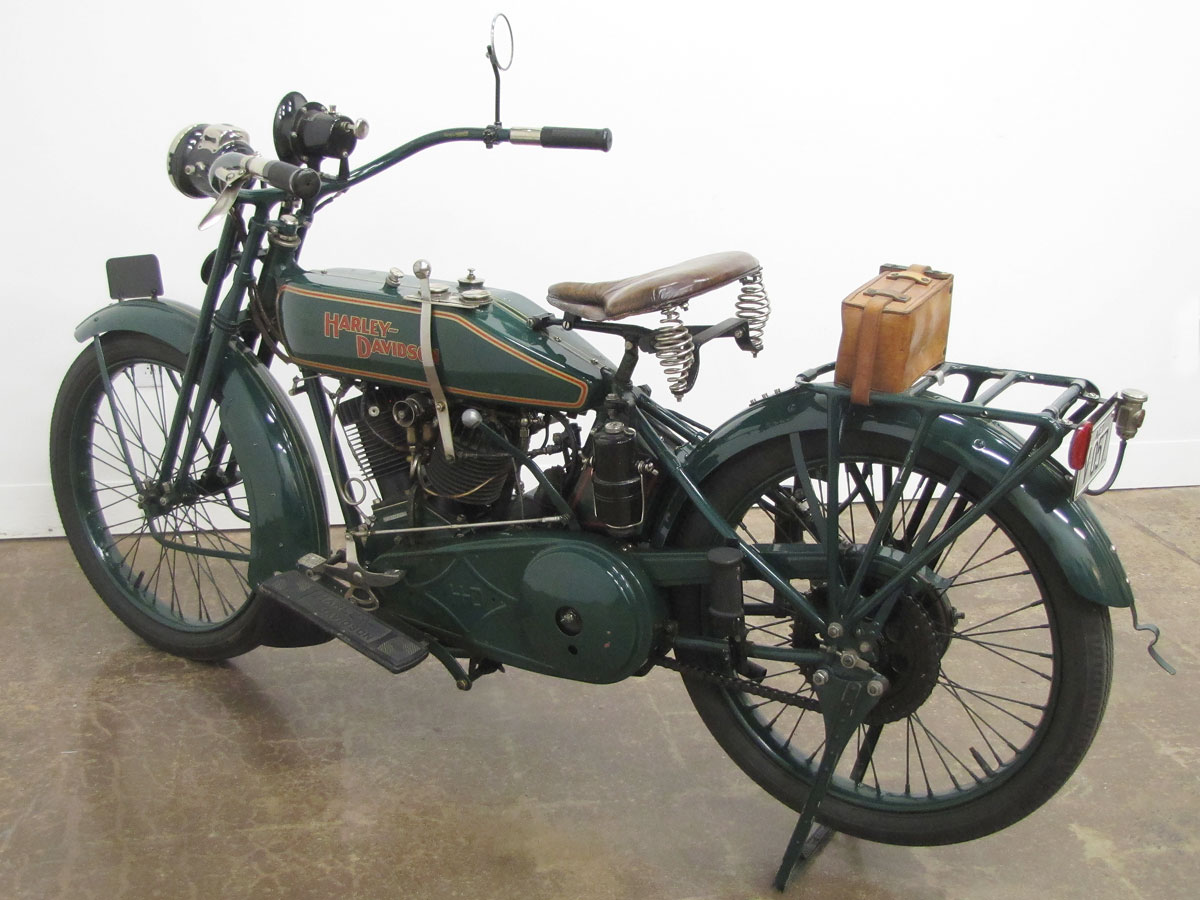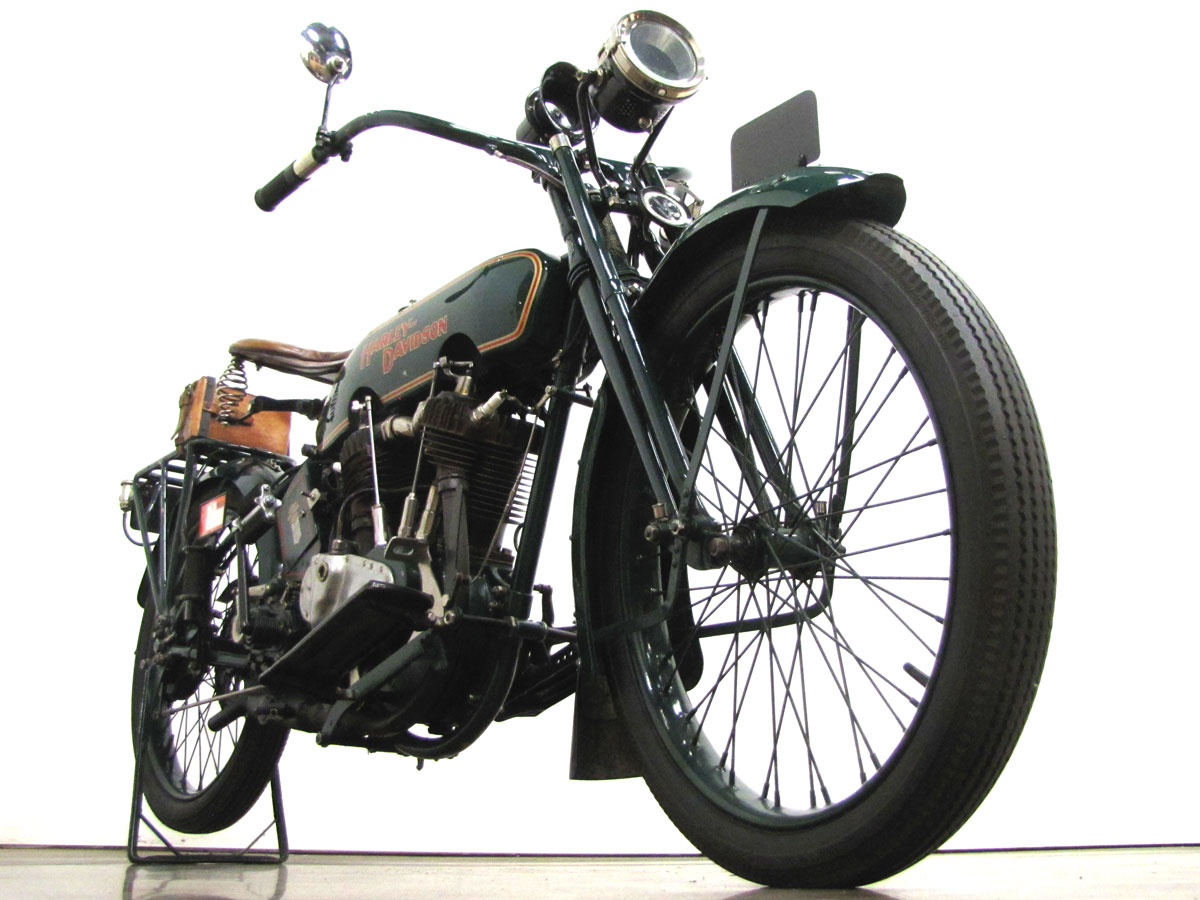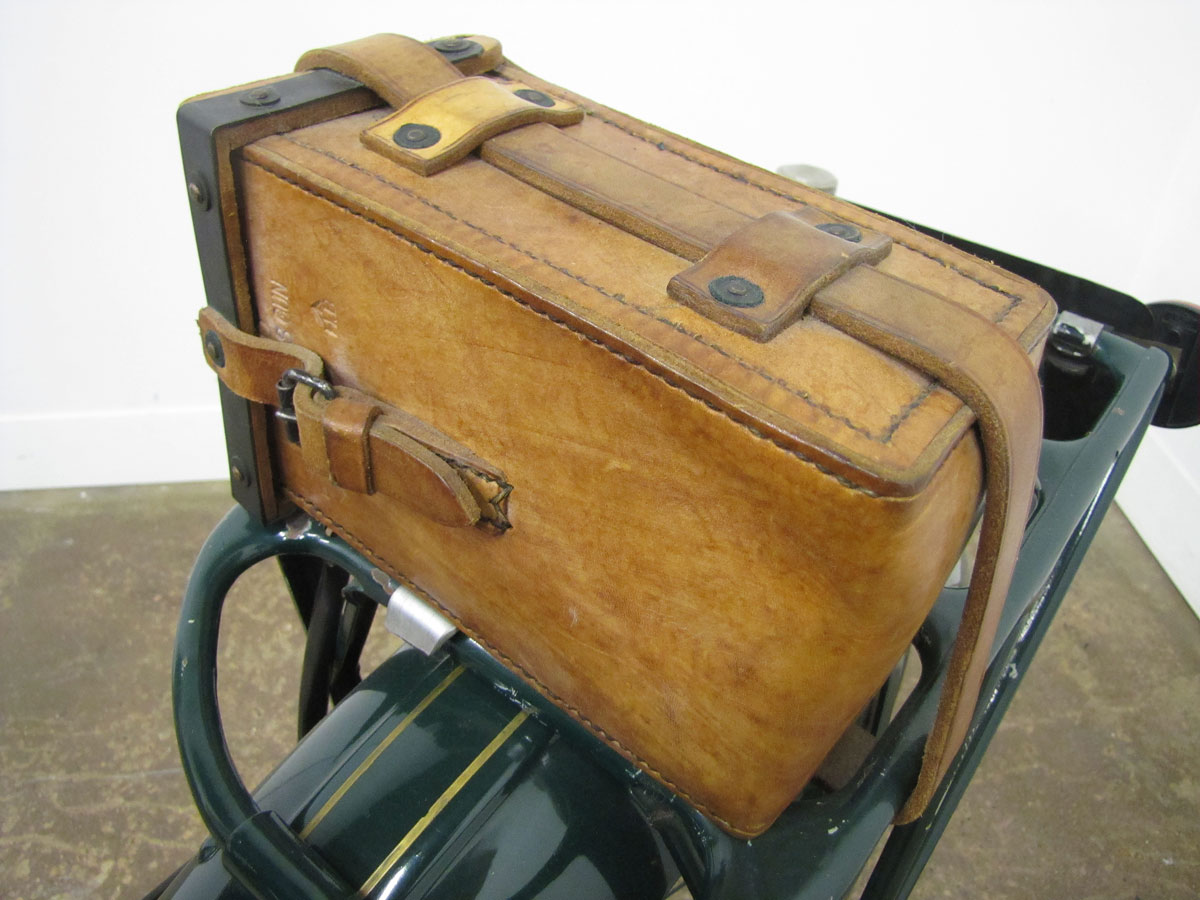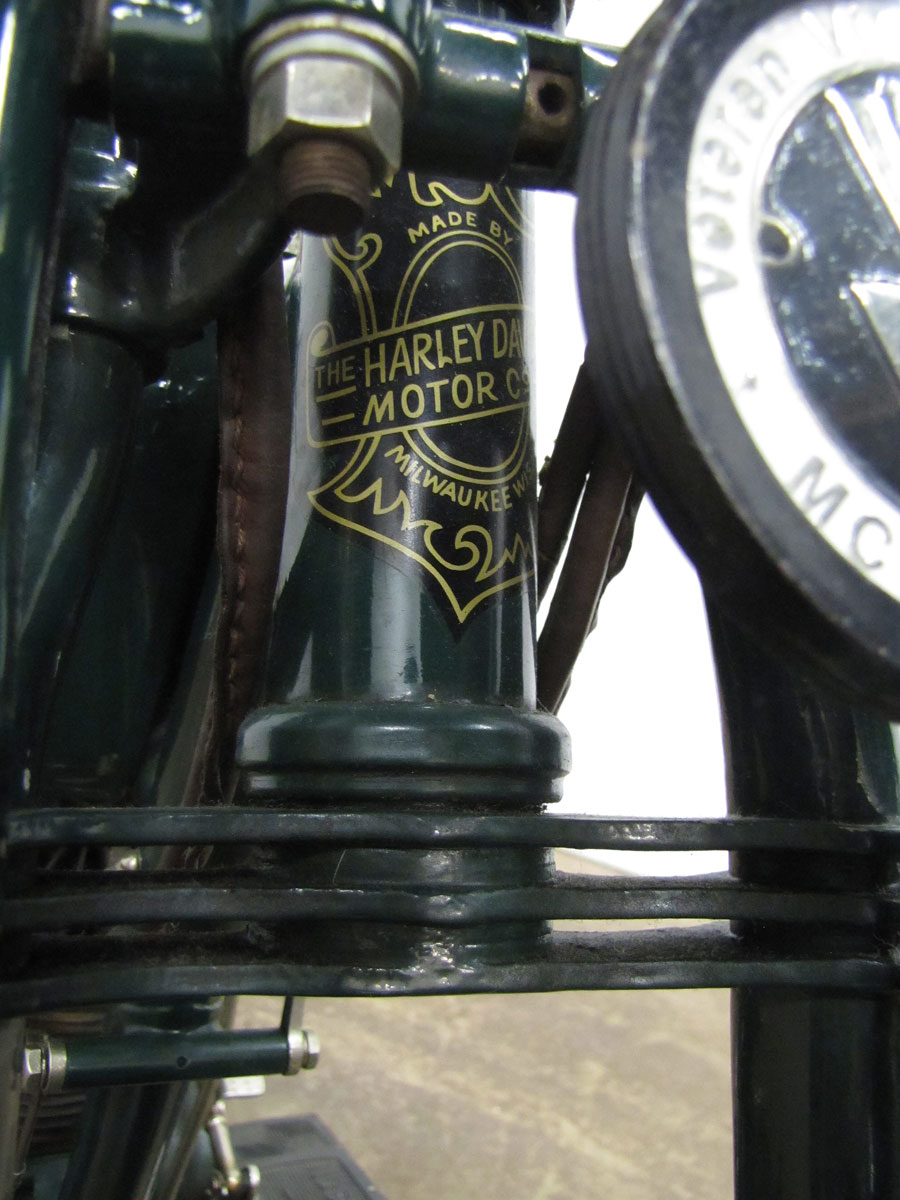
Long story short; this motorcycle went from Milwaukee to Australia, then back to Iowa, yet it’s had just three owners in over 100 years!
Noting the “A” in its serial number, the bike is a military model that shipped to Australia to support Allied troops’ efforts there in World War I. After the War, it was sold as surplus, and an Australian man bought it. He rode it a bit and parked it in his back yard for years, and then it fell over. After seeing the bike on its side for a long time, a neighbor asked about it, offered to pick it up. That guy wound up buying it and restoring it, repainting it this green. Though the tank that was laying against the ground rusted through, all the other parts are original. The current owner got it from the guy who restored it about 20 years ago, as it sits. He says he was told the green was correct for typical civilian Model J’s shipped to Australia, though his bike was olive drab when manufactured for the military.
The Model J Harley-Davidson was originally produced for military service around 1915. After World War I Harley-Davidson converted their production to serve typical civilian customers. The Model J became Harley’s top of the line model. Originally produced in Olive Drab for the military, Harley-Davidson reworked the machine mainly by changing the paint color, offering a now familiar shiny olive green color with delicate striping they used until 1932.
As big engineering steps were made, driven somewhat by war time technology advancements, with battery ignition becoming the norm, and electric lights standard along with a 3-speed transmission, the Model J came into being. It was offered in various 61 and 74 cubic inch (1921) versions and served riders well until the arrival of the “flathead” Model D around 1929. The J was notable in that in about 15 years of manufacture it had been proven on streets, race tracks and even served couriers in World War I. But response to military needs had caused extreme ups and downs in production: Harley-Davidson production is noted at a record 27,000 machines in 1920, but with military surplus available it dropped to 11,460 for 1921!
With annual engineering improvements the J was an even better bet than its predecessors for sidecar use. The frame and fork were stronger and more pulling power was available from the J engine which was eventually up to 18 horsepower, up over 50% from its early versions.
This machine is one of several Model J’s and Model JD’s in the National Motorcycle Museum including the machine on which John Parham sponsored Matt Olsen for the 2012 Cannonball Endurance Run. And several J engines are mounted on the “Motor Wall” for you to study.
This fine 1919 Harley-Davidson Model J will be among hundreds of motorcycles and thousands of pieces of memorabilia offered in the John Parham Estate Collection Mecum Auction at the National Motorcycle Museum, Anamosa, Iowa, September 6 – 9, 2023. Watch for information on the Mecum Auctions website, Mecum.com For schedule information or to register as a bidder for this and all Mecum events, visit Mecum.com, or call (262) 275-5050 for more information.
Specifications:
-
- Engine: F Head 45 Degree V-Twin
- Bore & Stroke: 3.31 x 3.5 Inches
- Displacement: 61 Cubic Inches (1000 cc’s)
- Carburetion: Schebler
- Ignition: 6V Battery / Coil / Points
- Horsepower: 18HP
- Primary: Chain Driven
- Clutch: Hand Operated
- Transmission: Three -Speed
- Final Drive: Chain
- Frame: Steel, Single Loop
- Suspension: Linked Sprung Fork / Rigid, Sprung Seat
- Wheels / Tires: 3.00 x 28 / 3.00 x 28 Inches
- Brakes: Drum, Foot Operated, Rear Only
- Lighting: Carbide
- Wheelbase: 59.5 Inches
Leave a Reply
Want to join the discussion?Feel free to contribute!

















































Coolest bike Ive ever seen. Love to ride it.